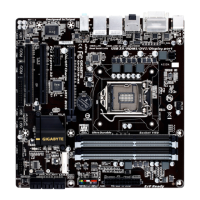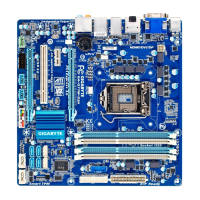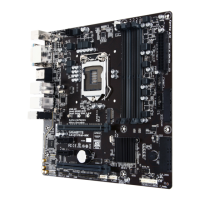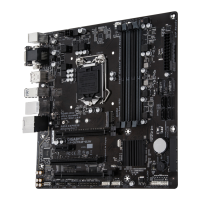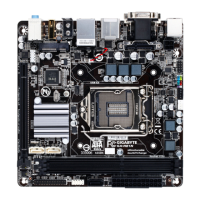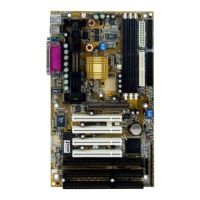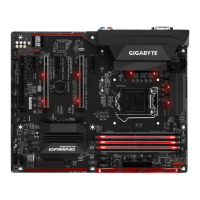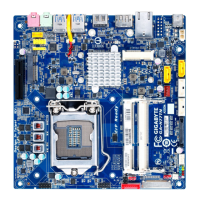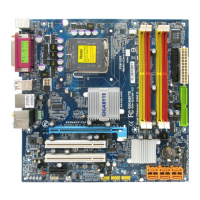
Do you have a question about the Gigabyte GA-Q35M-S2 and is the answer not in the manual?
| Number of memory slots | 4 |
|---|---|
| Maximum internal memory | 8 GB |
| Processor socket | LGA 775 (Socket T) |
| Processor manufacturer | Intel |
| USB 2.0 connectors | 3 |
| Power fan connector | Yes |
| Number of SATA connectors | 6 |
| Dimensions (WxDxH) | 244 x 244 mm |
| PS/2 ports quantity | 2 |
| USB 2.0 ports quantity | USB 2.0 ports have a data transmission speed of 480 Mbps, and are backwards compatible with USB 1.1 ports. You can connect all kinds of peripheral devices to them. |
| Firewire (IEEE 1394) ports | 0 |
| Audio chip | Realtek ALC888 |
| Power source type | ATX |
| Audio output channels | 7.1 channels |
| Motherboard form factor | micro ATX |
| Compatible operating systems | Microsoft Windows Vista/XP/2000 |
| Networking features | Gigabit Ethernet |
| Trial software | Norton Internet Security |
Essential safety guidelines for handling and installing hardware components.
Critical guidelines and safety measures before installing the CPU.
Detailed instructions for correctly mounting the CPU into the socket.
Steps for applying thermal paste and attaching the CPU cooler.
Essential guidelines and safety measures before installing RAM modules.
Detailed step-by-step instructions for inserting memory modules into slots.
Safety guidelines before installing expansion cards into the system.
Precautions to follow when connecting internal devices.
Details and pinouts for the 4-pin 12V and 24-pin ATX power connectors.
Function for resetting CMOS settings to factory defaults.
Explanation of BIOS functions and how to enter the setup utility.
Warnings and recommendations regarding the BIOS update process.
How to move between menus and select options within the BIOS.
Setting boot order and password requirements for system access.
Setting the SATA controller operation mode in BIOS.
Monitoring key hardware parameters like voltage, temp, and fan speed.
Setting CPU temp thresholds and fan failure warnings.
Overclocking settings for graphics and CPU clock ratio/frequency.
Adjusting CPU voltage and viewing the current Vcore.
Restoring stable, minimal-performance default BIOS settings.
Restoring optimal performance default BIOS settings.
Saving current BIOS configurations and exiting the setup utility.
Step-by-step guide for installing chipset drivers using the utility.
Introduction to the system backup and restoration software.
Step-by-step guide for creating a system backup.
Instructions on how to recover system data from a backup.
Details on GIGABYTE's Q-Flash BIOS update tool.
Steps required before updating the BIOS using Q-Flash.
Step-by-step guide for updating the BIOS via a floppy disk.
Steps after BIOS update, including reloading defaults.
Options for saving BIOS and performing online updates.
Steps for manually updating the BIOS using @BIOS.
Introduction to system overclocking and management tool.
How to configure the SATA controller mode within BIOS setup.
Steps to enter the RAID BIOS setup utility.
Starting the process to create a RAID volume.
Setting the volume name and choosing the RAID level.
Choosing hard drives and setting the stripe block size for RAID.
Finalizing the RAID volume creation process.
Steps to remove an existing RAID array.
Step-by-step guide for preparing the SATA RAID/AHCI driver diskette.
Steps for installing Windows XP with the RAID/AHCI driver.
Selecting the appropriate driver during Windows XP installation.
Guide for installing Windows Vista with RAID/AHCI drivers.
Choosing the appropriate driver during Windows Vista installation.
Common issues and their solutions, including BIOS options and beep codes.
Flowchart for diagnosing and resolving initial system startup problems.
Flowchart for checking CPU cooler, display, and keyboard functionality.
